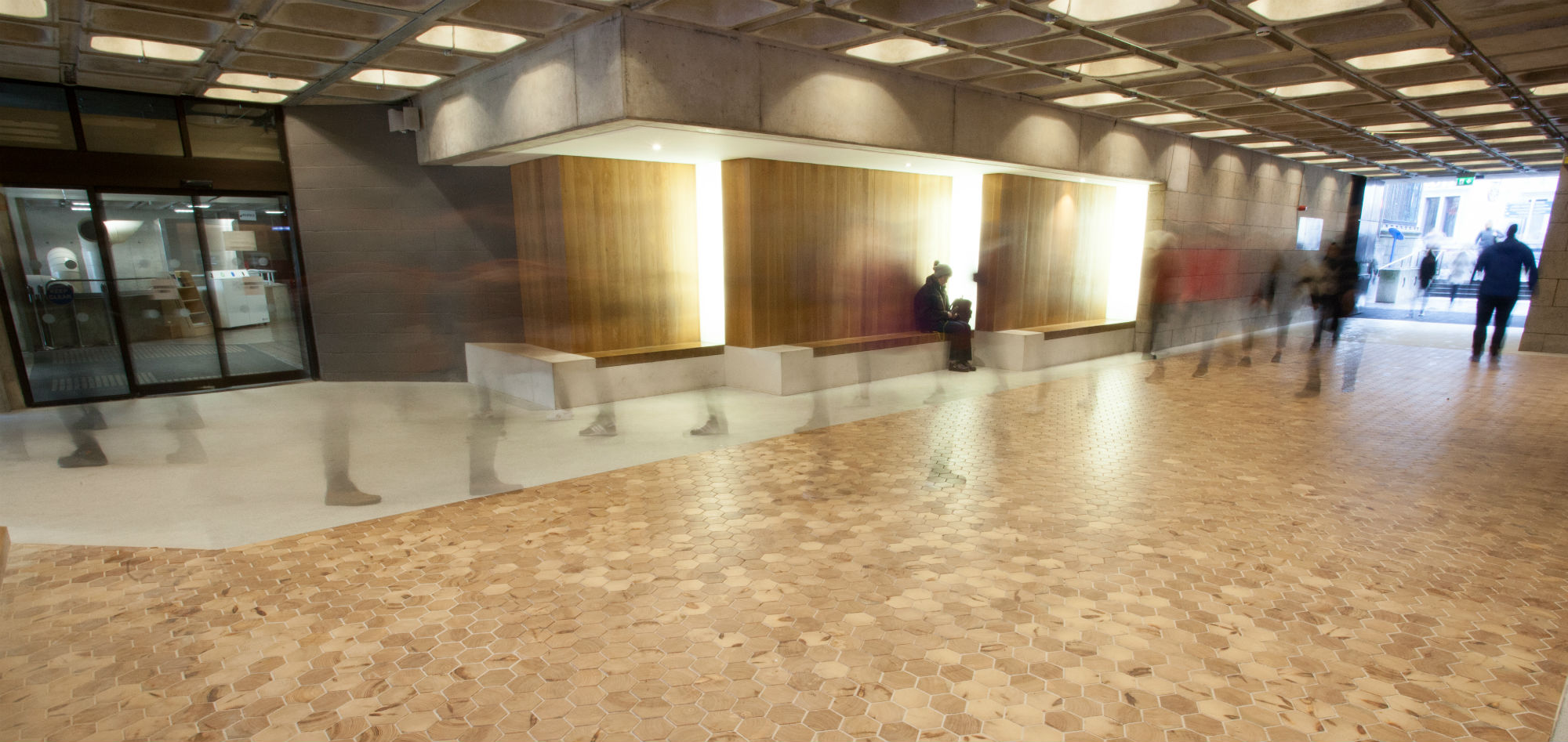Arts Block looks fab at 40 thanks to Nassau project
Published April 3rd, 2019

Fortieth birthdays can typically be a time for reflection, often resulting in the desire for a makeover. It’s no different for Trinity’s Arts Block, which was completed in 1979 making it 40 years old this year.
A phased refurbishment of the building and its environs has been taking place since 2016. However, the most recent part of the project – to improve the look and overall access at Nassau Street entrance – has got to be one of the most striking.
Project
New flooring, comprising hexagonal timber cobble insets, was unveiled last month along with a new pale coloured floor finish. “The original refurbishment project was completed in 2016 but the floor finishes used at the Arts Block proved problematic,” says Monica Janson, Design Services Manager with Estates and Facilities.
“Following extensive research, it was decided to change the timber inset element of the floor. This had originally been made from green oak square blocks. Pitch pine was chosen this time as the most suitable timber to use and the hexagonal shape was deemed to be a more structurally stable shape than the square blocks.”
The eagle-eyed among you will notice that the shape of the blocks is also a nod to the floor at Front Gate.
This being Trinity, there is an historical element to the story as well.
Horses' hooves
The emergence of timber hexagonal cobbles started around 1830, originating in Russia. “Timber setts were usually laid along tram lines and beneath carriage arches in order to deaden the noise from the horses’ hooves,” says Monica.
“They were also used on streets around buildings such as hospitals and courthouses where noise could cause nuisance to the occupants. As this type of paving is now very rare, it is important to protect and maintain areas where timber setts have been used.”
The timber used in this project is a combination of recycled roof beams from a warehouse in Northern Ireland as well as some of the timber that was salvaged from the GMB fire in the early 1990s. Another interesting fact is that the GMB timber can be easily identified as it is a slightly lighter colour than the Northern Irish wood.

